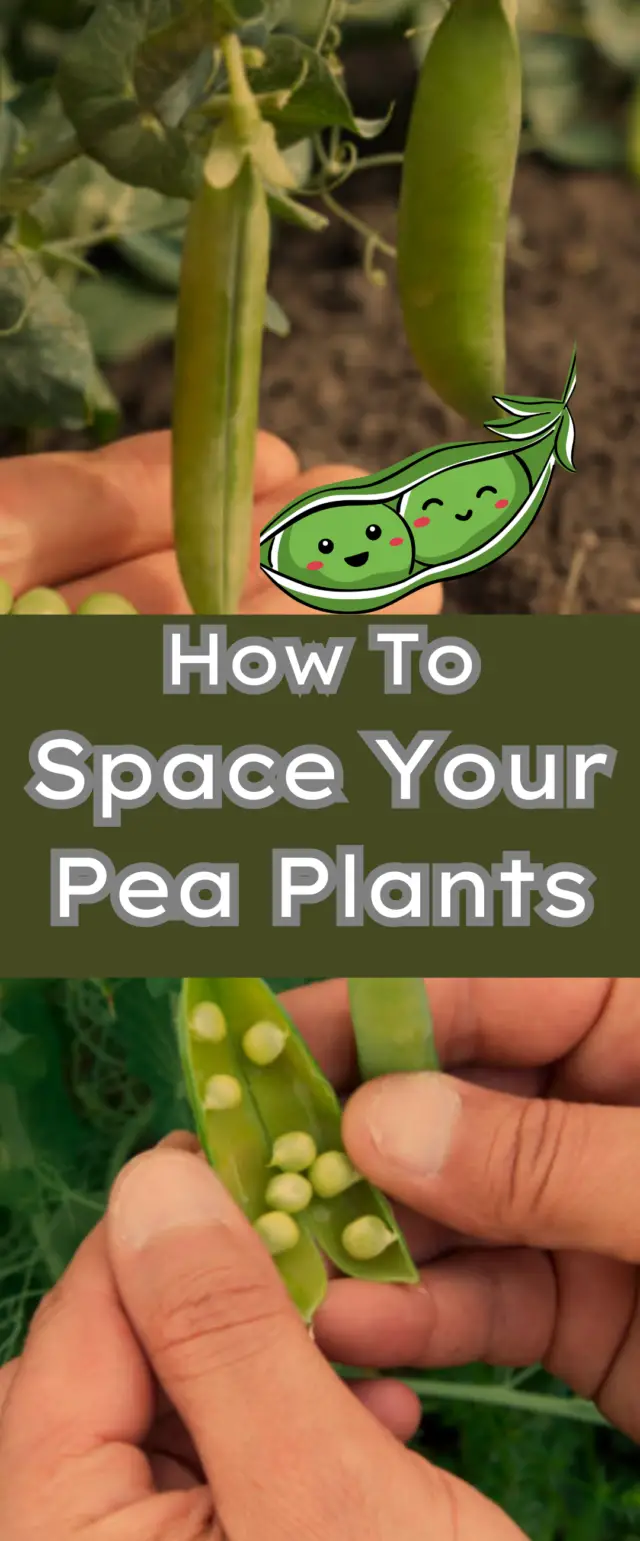As anyone who has ever grown peas knows, they are one of the most rewarding and easy-to-grow vegetables out there.
With their crisp pods, sweet flavor, and ability to go from seed to plate in as little as 60 days, it’s no wonder peas are a staple in so many home gardens.
However, even though peas are relatively low-maintenance, there are still some important tips and techniques to ensure you get a bountiful harvest. One of the most crucial factors is proper plant spacing.
Space your pea plants too close together and they’ll struggle with overcrowding, competition for resources, and poor air circulation.
Space them too far apart, and you’ll be wasting valuable garden space and limiting your total yield.
Everything you need to know about spacing peas for optimal productivity will be covered in this post.
We will discuss various spacing approaches like trellising, succession planting, and the best plant spacing for various pea kinds. Let us begin with the fundamentals.

Pea Plant Spacing
The general rule of thumb is to space pea plants around 2-4 inches apart in rows that are 18–24 inches apart. This may seem like very tight spacing, but peas actually grow quite close together.

You will want to err on the side of closer spacing for smaller pea varieties, like:
- Dwarf/Bush varieties (Space plants 2 inches apart in rows 18 inches apart)
- Snap peas (Space plants 3 inches apart in rows 18–24 inches apart)
- Snow peas (Space plants 3 inches apart in rows 18–24 inches apart)
For taller vining pea varieties, you can space them slightly farther apart to allow for more spreading.
Tall telephone/vining peas (Space plants 4 inches apart in rows 24 inches apart)
The spacing requirements stay about the same whether planting in rows, raised beds, or other container or in-ground setups. Just be sure to allow at least 18 inches between rows or beds for plenty of airflow.
When planting multiple rows of peas, it’s traditional to run the rows in a north-south direction. This ensures even access to sunlight on both sides of the row throughout the day.
Pea Spacing Techniques
While the spacings listed above are a good guideline, you can get creative with pea spacing techniques and plant supports to maximize your yields. Here are some methods to try:
Trellising
Most gardeners choose to trellis their taller vining pea varieties. A trellis, netting, or even just a simple row of bamboo stakes allows the vining plants to climb upwards while still getting good air circulation and sunlight exposure. When trellising, you can generally space the pea plants about 4-6 inches apart in each row.
Wide-Round Planting
An alternative to single rows is to plant your peas in a wide row or “block,” that is 12–18 inches across. Then space the individual pea plants around 6 inches apart across the entire wide row block. This allows for more plants per square foot while still giving adequate air flow down the middle of the row.
Raised Bed Spacing
Raised beds are great for pea growing. Try spacing dwarf pea varieties around 4-6 inches apart in a zig-zag pattern across a 2-3 foot-wide raised bed. Or space taller vining varieties around 6–8 inches apart and run a trellis lengthwise along the center of the bed.
Succession Planting
Due to their short lifecycle, peas lend themselves very well to succession planting. Instead of planting all of your pea seeds at once, try staggering multiple plantings every 2-3 weeks. This will ensure a longer, continual harvest window rather than getting a ton of peas all at once.
When succession planting peas, you can either plant new rows right alongside the older rows (space permitting), plant in adjacent blocks or raised beds, or replace old rows with new plantings after the first harvest.
Pea Planting Tips

Here are some final tips to maximize your pea production through proper spacing and planting:
- Always plant pea seeds at the recommended depth (around 1 inch deep). This allows the plants to establish a strong root system from the start.
- Water your peas regularly to keep the soil slightly moist. Pea plants struggle in very dry or wet conditions.
- Add a trellis, netting, or stake support at planting time if growing vining varieties. Having the support system in place early will prevent damage to pea plant vines later on.
- Be sure to leave at least 24 inches of space between the outside rows and any fences, walls, or other barriers for good air circulation and sun access.
- In very warm climates, it may be best to switch to closer spacing (2 inches apart) to help shade the soil and retain moisture.
- Don’t crowd your pea plants! Even though they grow close together, they need adequate airflow and access to sunlight.
So there you have it—everything you need to know about properly spacing and planting peas for maximum yields in your garden. Pay careful attention to the spacing recommendations for different pea varieties, plant at the right depth, use supports for vining types, and consider techniques like succession planting or wide row blocks.
Peas are one of the easiest and most productive crops you can grow in your vegetable garden. But you will maximize those yields by spacing your pea plants just right. Feel free to experiment and see what works best for your garden. Happy planting!




